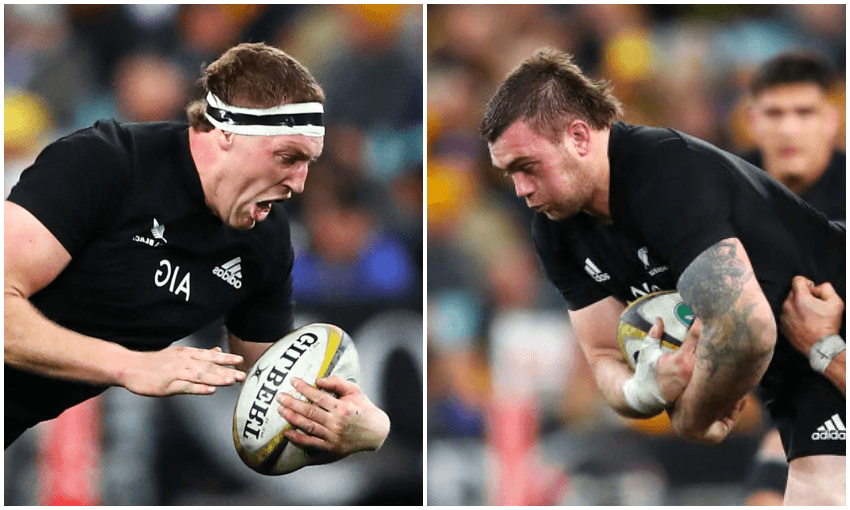As sported by Brodie Retallick and Liam Squire, the classic All Blacks mullet hairstyle is making a comeback. And not before time, writes Tony Lyall.
So here we are, one game into the 2018 Rugby Championship and already a beautiful trend is emerging. During the All Blacks impressive outing against the Wallabies on Saturday, amongst the tries, the fends and the concussions, one thing was clear and obvious: the mullet is back. Gorgeously adorning the heads of All Blacks Liam Squire, Sam Cane and man of the match Brodie Retallick were the hearty beginnings of something beautiful. Long hair on the back and short hair on the rest of the head.
Even Australian standout Kurtley Beale wasn’t immune to the intoxicating lure of the party out the back brigade, proving that even though the Wallabies weren’t up to scratch on the field they know fashion when they see it. Unfortunately for Beale he was unable to control the power of the mullet; while it did help him to stand out in a beaten team, it ultimately wasn’t enough to drag his side to victory. Seeing those mullets fly on Saturday warmed my heart. It reminded me of a time not too long ago when you couldn’t look at a rugby field without seeing a luscious Larry David esque mop flying about. So where did all that hair go?
In an seemingly bygone era, the mullet was the go-to haircut for rugby union’s no-nonsense workhorses. Blokes sporting a mullet were the type to poke you in the eye on the field, then later in the clubrooms play fingers around a pint with the same finger they eye gouged you with. Notorious hardmen like James Eaton, Jamie Mackintosh and Carl Hayman sported flowing locks on the back collar, striking a mix of fear and jealousy in all who were lucky enough to catch a glimpse. It seemed almost as if these hard men were wanting to give the public a glimpse underneath their tough-as-nails facade, to show that they had a bit of a larrikin character underneath it all. A bit of heart.
Then the mullet got fancy. With the increase in popularity of the mullet came people wanting to stand out from the crowd. Sometime around 2007, when white boots were still worth a hefty fine at the end of year court session, the hairstylists were called in and the ends of the mullet started getting blond tipped. Notorious town shoe wearers like Victor Vito, Ali Williams and Dan Carter started sporting them, bringing the Fancy Mullet to previously unheard of heights. Soon, everyone from the bouncer at your local sifty nightclub to the guy working at Video Ezy were sporting a trendy mullet. Then we reached peak saturation and the allure started to wane. As quickly as it ascended, the mullet seemingly disappeared from popular consciousness.
Since then All Black styles have come and gone, but under Richie McCaw’s sensible short back and sides reign flashy fashion choices were shunned. It seemed that McCaw had a real bangers and mash attitude to male grooming: he even went as far as enforcing a ‘no coloured boots’ policy for forwards in the team. This environment was obviously less than ideal for people wanting to wear their hearts on the back of their heads. The All Blacks started to resemble an accounting office, haircut-wise. Personally, I think Richie McCaw really missed an opportunity by not growing his hair out for his final World Cup and hoisting the trophy looking like some sort of rugby Fabio, but that is beside the point.
Since Richie’s retirement, the apparent rules around what the ABs can wear seems to have relaxed, with new captain Kieran Read setting the tone by donning a pair of very impressive pink boots. This ripple may have led to the wave of beautiful haircuts we saw in Sydney on Saturday night. The mullet was back on display and it was a thing of beauty. Admittedly, most of them still had some growing in to do, but the beautiful thing about the mullet is that it can grow. That’s its whole appeal: the mullet takes root in a place on the head not affected by male pattern baldness. Anyone can grow it. The mullet really is the haircut of the people, and the All Blacks, and long may that remain.


